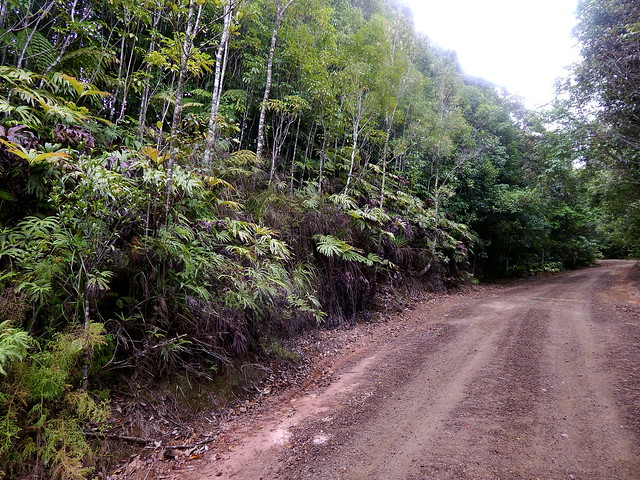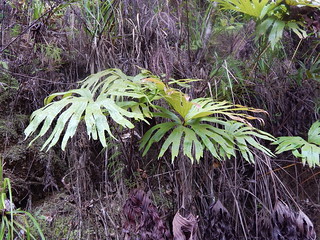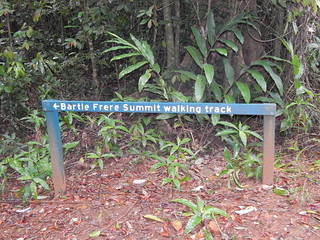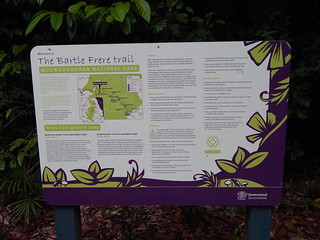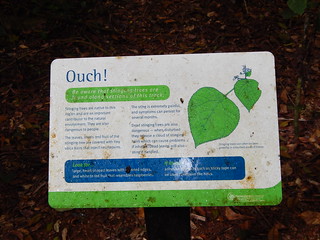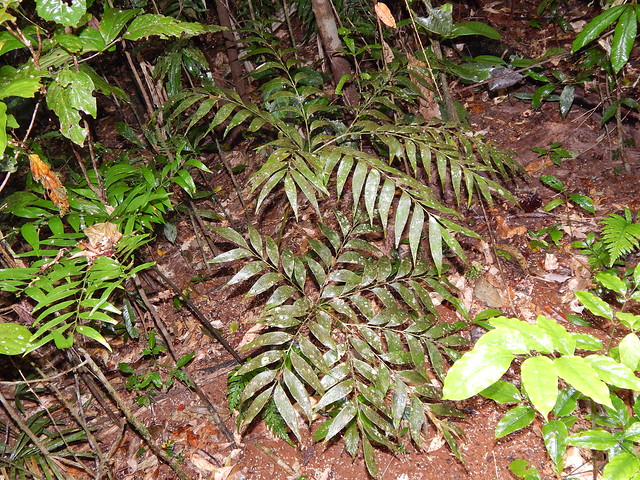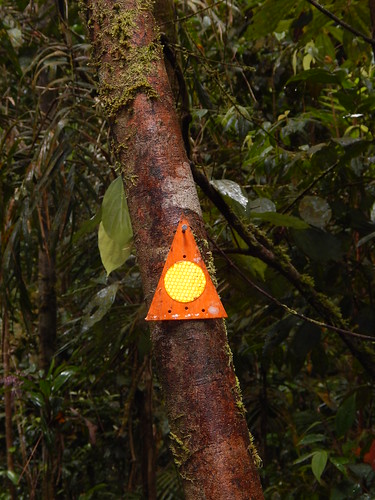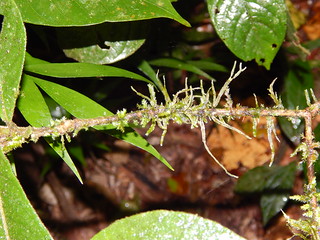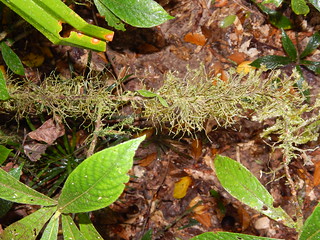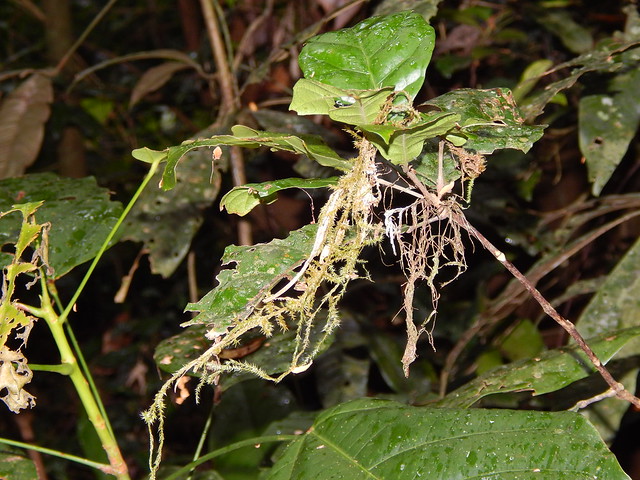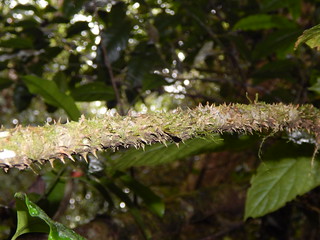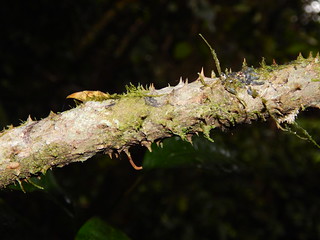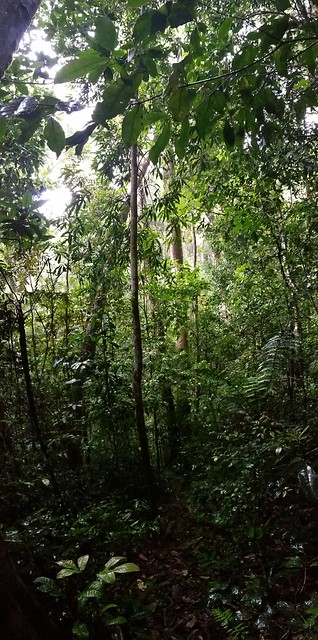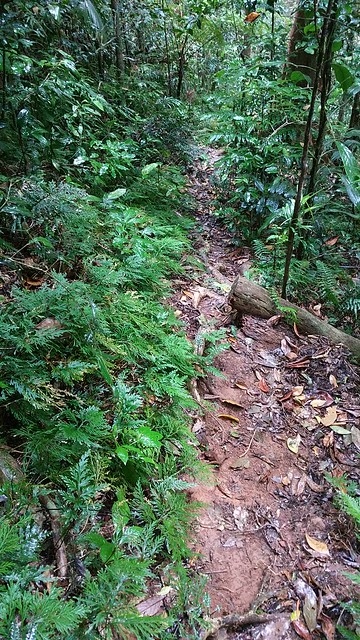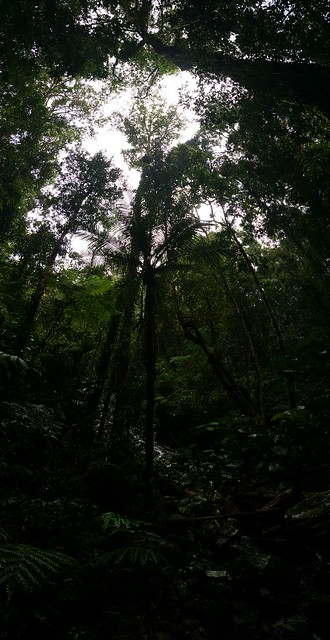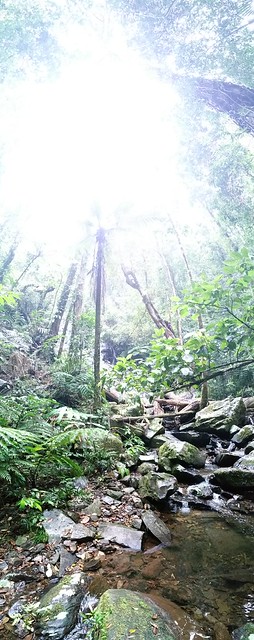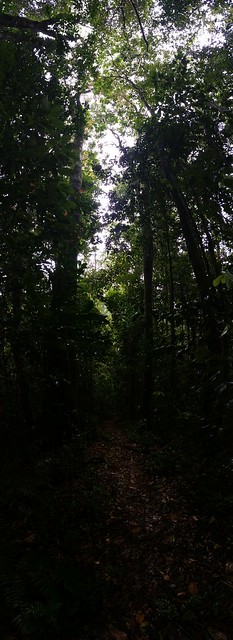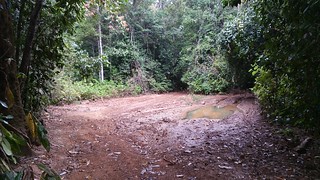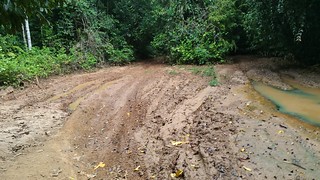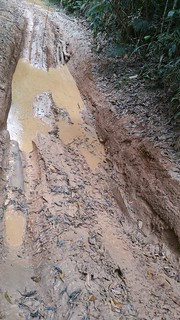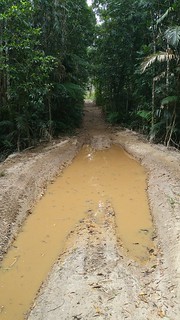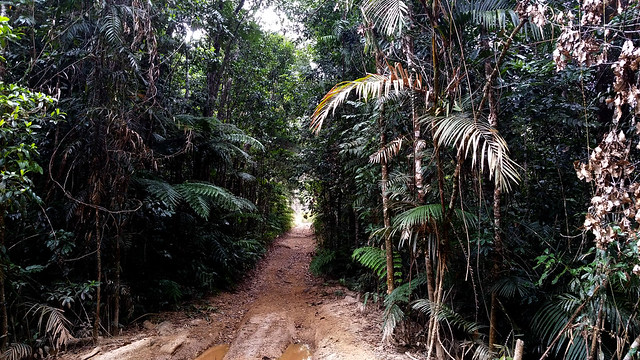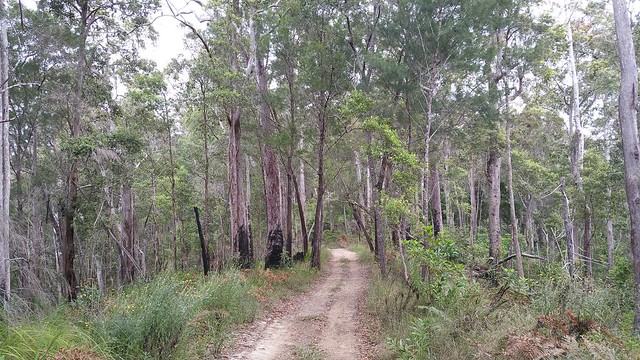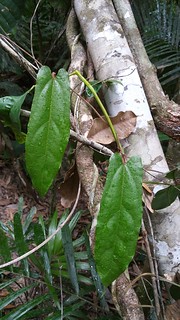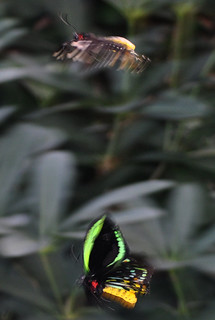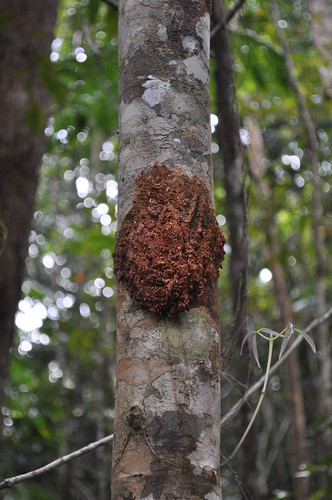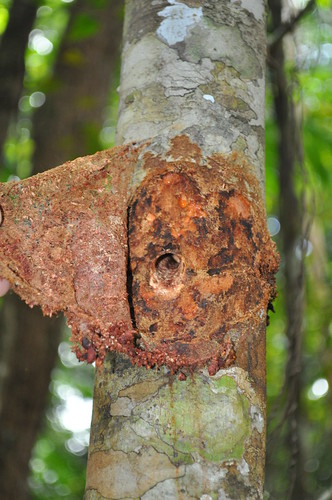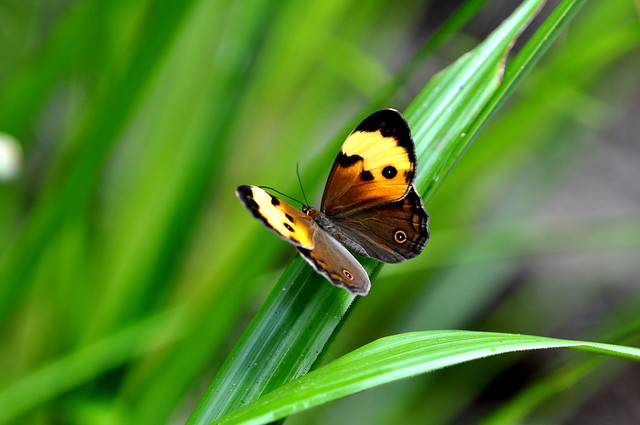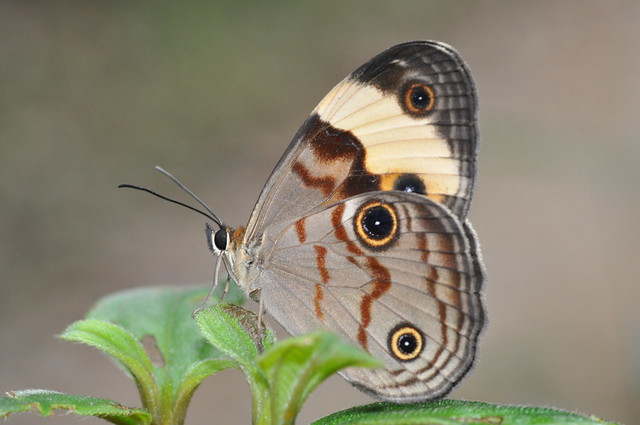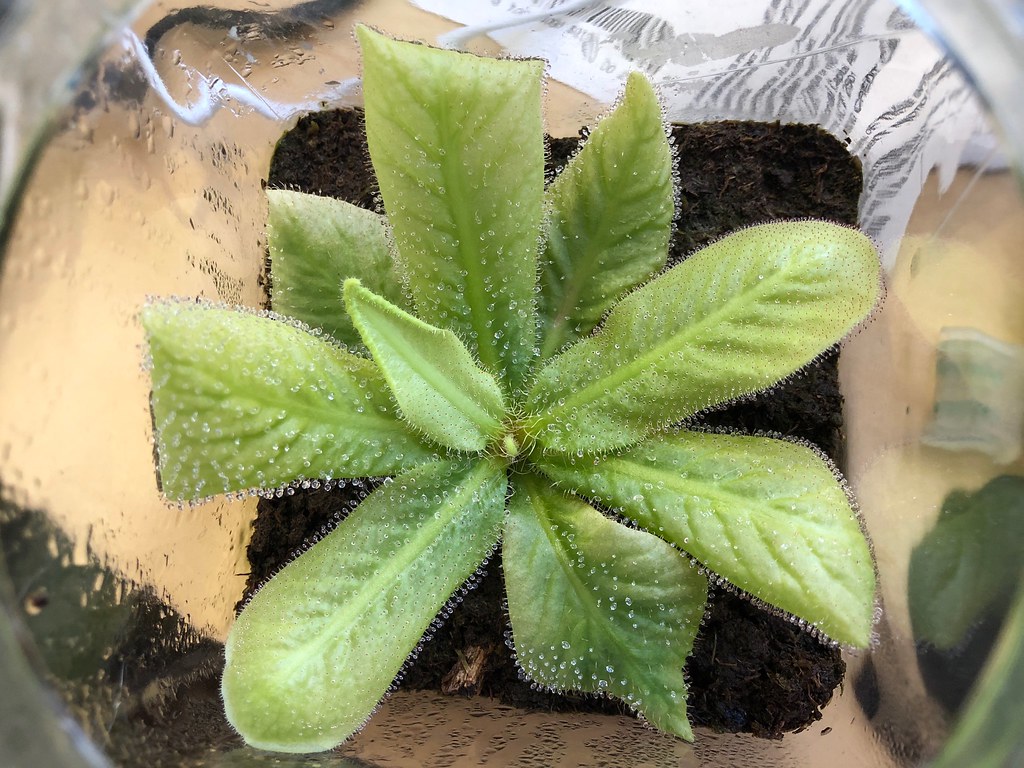
Not a Drosera schizandra in the wild…
When I got started on CPs as a 9 year old, the local library’s copy of Slack’s Carnivorous Plants lived at our house unless it was requested by someone else. One cloudy weekend, I came across Slack’s description of the tropical rainforest Drosera (Drosera sect. Prolifera). For some reason, the tiny black and white image of the Drosera schizandra fired my imagination about this group. A week or so later, I saw a plant of Drosera adelae for sale but was prevented from buying it. Imagination even more fired! A few years later we drove to Cairns and I got to see its home, Mount Bartle Frere, for myself. Imagination fired even more – I could only imagine the plants growing in the lush, tropical rainforest! Eventually I managed to get a plant of D. adelae from Triffid Park and this got me hooked on this group for life. Reading The Savage Garden told me of the third member of the group – Drosera prolifera. They are still among my favourite carnivorous plants, and while I did grow D. adelae and D. prolifera here from 2008 – 2011, I lost them due to lending their terrarium to the national science centre (Questacon) for a botany exhibit (bad idea!!!!).
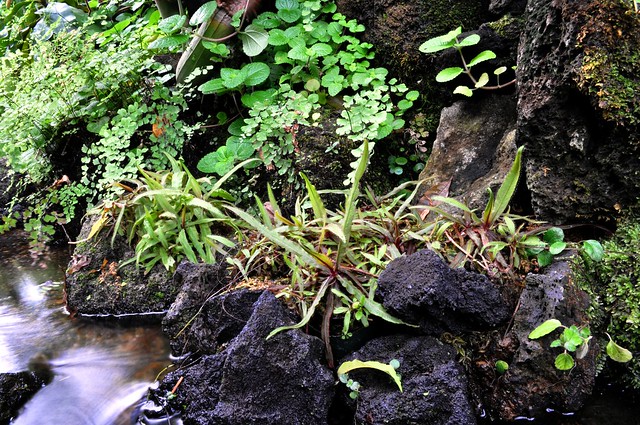
These Drosera adelae growing in the Sakuya Konohana Kan botanic gardens in Osaka, Japan, were as close as I came to finding a member of the Drosera Sect. Prolifera clade in the wild on my holiday!
Fast forward to 2015. Fresh back from Japan (see Holiday Tales Part 1), I got off the plane in Cairns, attended the Australian Entomological Society conference and made plans afterwards to go see Drosera schizandra on Mount Bartle Frere with close friend Bob Miller, self-taught botanist and entomologist, and an absolute legend when it comes to finding butterfly life histories and butterfly host plants. So, we duly headed up the Gilles Range and went down Gourka Road to the western summit trail of Mount Bartle Frere where D. schizandra grows. We were also joined by Bob’s son, Dave.
Here is a link to a video by Siggi Hartmeyer showing the drive in along Gourka Road and the habitat of D. schizandra. Below are some stills from the track in.
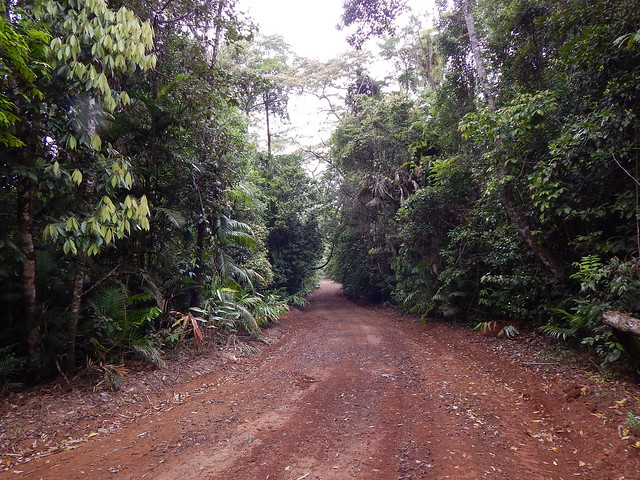
I have a lot of experience with doing field work in rainforests. My childhood was comprised of many blissful weekends spent with my father – a now retired forester – exploring rainforests in south-eastern Queensland. While I will always have a soft spot for the haunts of my childhood, this rainforest is incredible in comparison. The closest I have seen to here in terms of forest quality and plant diversity was parts of the Connondal Range National Park near Woodford, and it was even a far cry from what I saw here.
Someone I know who has personal experience with D. schizandra had told me I need only go a few hundred meters from the carpark before I would find them growing both sides of the summit trail. My experience was somewhat different. Even with three experienced field naturalists scanning the forest floor up to Bobbin Bobbin Falls and back (about 2 km return!), we found no D. schizandra. By the time we realised we had lucked out, it was raining heavily (I now know I lucked due to bad directions, given deliberately by someone who should know better). Back at the car, I had a brainwave based on my own research (moral of the story - always trust your own research) and tried another site nearby while Bob and his son Dave dried off. Further enquiries made after I got back to Canberra confirmed that this second spot was the right place to search. But with rain increasing to torrential levels, dense fog settling in and the thought of being bailed up by a male cassowary protecting his chicks while on my own (and I could hear a cassowary close by!), I left it for another day. We also tried to reach yet another known site for D. schizandra on the Old Cairns Track, but ran out of time for that one as well.
Even though I lucked out, here are some photos of the Bartle Frere rainforest up to and including Bobbin Bobbin Falls, and a substantial portion of the trail to Windin Falls. This area, part of Wooroonooran National Park, is a spectacular part of north Queensland and it is better than the parts of north Queensland they show the tourists.
Western summit trail, Mount Bartle Frere, Wooroonooran National Park
The trailhead and route map.
The trail itself is marked out with orange reflectors for its entire length. This is a good thing – the rainforest understory is so dense (and dark!) and the track so ill defined in places that it would be easy to stumble off and get lost. At the start of the trail is a warning sign for the stinging tree or Gympie-Gympie, Dendrocnide moroides. A member of the mulberry family Moraceae, this plant packs a very powerful sting that recurs when wet or during extremes of hot or cold for many months. It is also the host plant of the white nymph butterfly (Mynes geoffroyi). We didn’t see any plants to photograph though.

While we lucked out with Drosera schizandra, we were graced with an equally endangered plant, Gardenia actinocarpa.
It is so wet here mosses grow with profusion on the stems and leaves of other plants. The western summit trail is a relatively easy place to see real moss forest in Australia, but it would be better higher up, or on a mountain like Thornton’s Peak in the Daintree (a future challenge – climb Thornton’s Peak to see Drosera prolifera!).
This branch was nicely covered in strong thorns. Luckily it was just above head height; any lower and it would be a major coathanger hazard to bushwalkers.

The turnoff to Bobbin Bobbin falls is subtle and could be easily missed when going uphill. It is better marked for those coming down than going up. Above is a panorama showing the forest at this point. It started raining heavily about now.
The walk in to Bobbin Bobbin Falls would better be described as a near vertical ladder made up of conveniently placed roots! This view looks fairly benign until you realise it was taken looking down at a 45 degree (or steeper!) angle. There are lots of magnificent ferns and club mosses along the descent.
And here are the falls themselves.

And a panoramic shot.

Carnivorous plant books often talk about how the rainforest Drosera grow in very dark conditions. To show how dark it was here, the below pairs of vertical panorama shots taken at Bobbin Bobbin Falls show the gradient between the light from the clearing around the falls themselves into the dense understory by exploiting a quirk of smartphone cameras. If you set a smartphone to panorama, it will automatically meter for whatever you point it at when you start the panorama. So, to show the abrupt change from light to dark as you descend through the canopy to the forest floor, I took vertical panoramas starting in either the canopy or forest floor. Compare the panoramas taken from ground up (which become overexposed quickly because the camera metered for dark) and canopy down (which are very dark at ground level because the camera metered for the brightness of the canopy) to get a visual appreciation of how light changes with trophic level in a rainforest.
Neat, hey?
When I actually find Drosera schizandra, I will make sure I take similar photos to show the conditions they grown under in a meaningful manner.
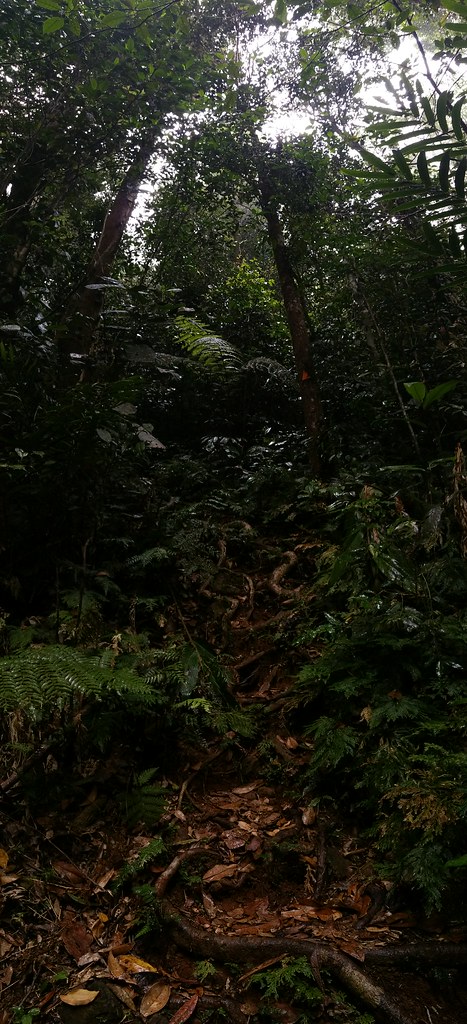
This view shows how steep the climb back to the trail actually is! It relies on conveniently placed tree roots acting like a step ladder!

But the lush rainforest is so spectacular it makes the climb (and the leaches!) well worth the effort.
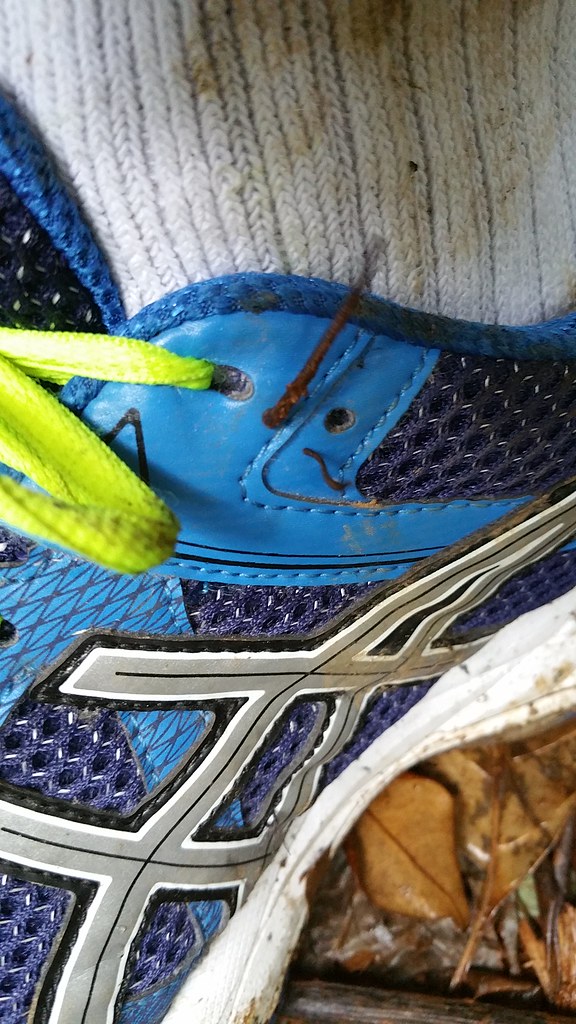
I did mention the leaches, right? Mount Bartle Frere is leach city!
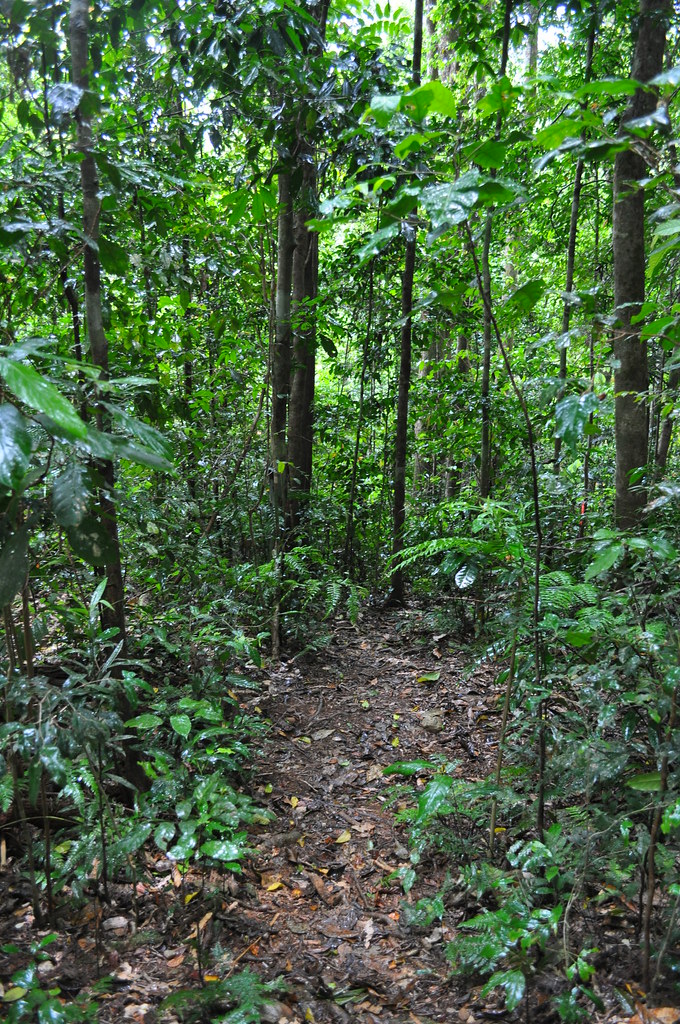
And here is a shot looking downhill along the western summit trail. It is hilly enough on the way in to Bobbin Bobbin Falls, but it gets much, much steeper after you pass the side track!
Old Cairns Track towards (but not reaching) Windin Falls
After we lucked out with the heavy rain on Bartle Frere, we headed to the Old Cairns Track nearby to try and make Bobbin Bobbin Falls, another known locality for D. schizandra (see this paper by Bill Lavarack in the ICPS journal). Although only a few kilometres away from the Bartle Frere trailhead, this area was not anywhere near as wet as Bartle Frere itself and it was actually sunny for a while after we got out of the car.
The first thing we saw as we drove in was the rare and endangered thong tree! And it was in fruit as well!

Unfortunately, we saw a lot of environmental damage along this track, which is now impassable for road vehicles unless you have a heavy duty 4WD with a winch and expertise driving it under super crazy conditions. The damage done to the track is extreme and appears to be caused by a mix of 4WD enthusiasts and quad bikers, judging by the tyre tracks we saw. Some of the potholes were incredible – one that was just starting to fill with water was as deep as a car and not much longer or wider. But when full, it would probably resemble a minor puddle. Someone could feasibly attempt to drive through it and suddenly find themselves submerged! It is quite likely that this trail will not be fixed anytime soon (if ever) as the habitat it passes through is just so pristine. I suspect conservation authorities may well want to keep all but the most dedicated of explorers out to protect the area – which is good conservation management if this is the case. These photos do not do justice to the damage we saw – the magnitude was hard to capture.
The rainforest the Old Cairns Track passes through is nonetheless very beautiful.
At one point there is even open Eucalypt heathland nearly identical to what occurs in Western Sydney.
Ultimately, we ran out of time and turned back, looking forward to something hot for dinner. While we did not see Drosera schizandra, a real highlight was finding some unique entomological fauna.
The hostplant (Pararistolochia deltantha) of Australia’s largest endemic butterfly, the Cairns birdwing (Ornithoptera euphorion), grew in abundance here, but we sadly did not see adults (I have seen them near here on a previous trip). But I did see birdwings in abundance further north in the Daintree, along with even more of the spectacular blue Ulysses swallowtail (Papilio ulysses joesa). Having seen Ulysses flying with the famed blue morpho (Morpho peleides) in butterfly houses, I can assure you that Ulysses beats M. peleides hands down for iridescence! But they are not the kings of iridescence – a blue morpho called Morpho rhetenor agustinae wins that contest hands down…
We also found the huge bore hole of a splendid ghost moth, probably Aenetus mirabilis judging by the huge size of the bore (the cover was 100 mm across!).
Sadly, we could not identify the host plant. Adults of this spectacular species are around 150-170 mm in wingspan and beautifully coloured (these specimens are in the Australian National Insect Collection, Canberra):
Male
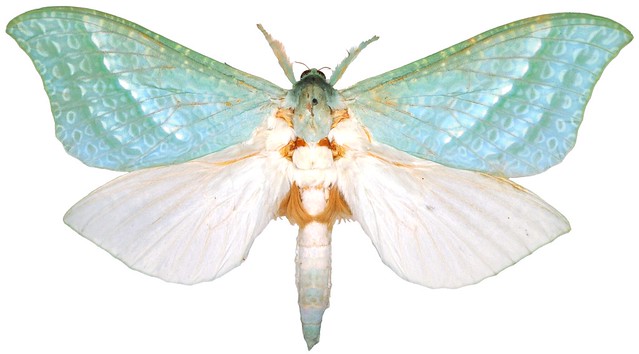
Female

Outside the park we also found and photographed the Helena brown butterfly, Tisiphone helena, which is endemic to tropical north Queensland. It feeds on Gahnia swordgrasses.
All in all, we had a lovely day of walking in some of the best rainforest Australia has to offer, surrounded by some very special plants, insects and their amazing habitat.
But no Drosera schizandra.
Maybe next time.
Next up – photos of the first Sarracenia flowers opening on the bog gardens.
